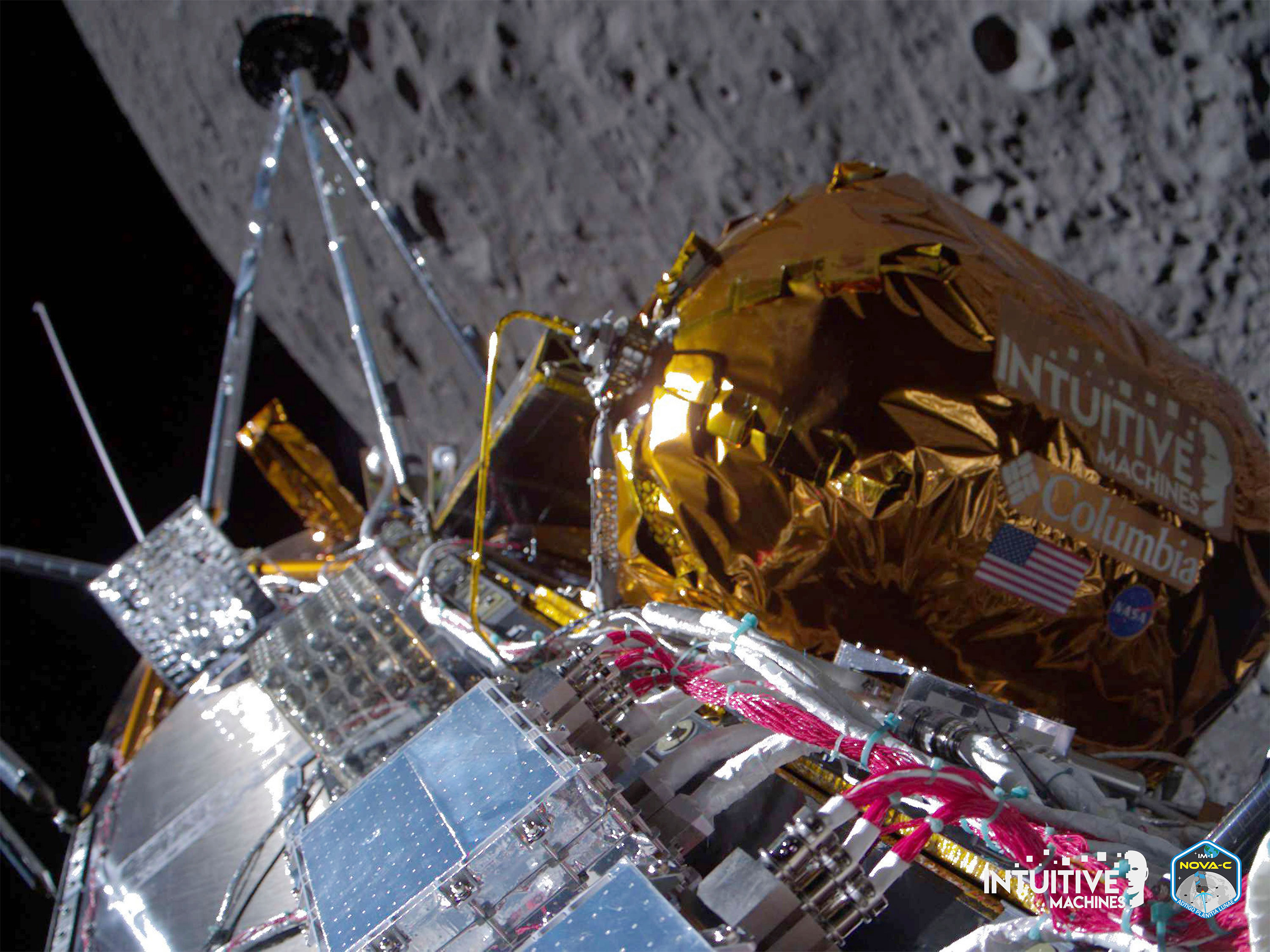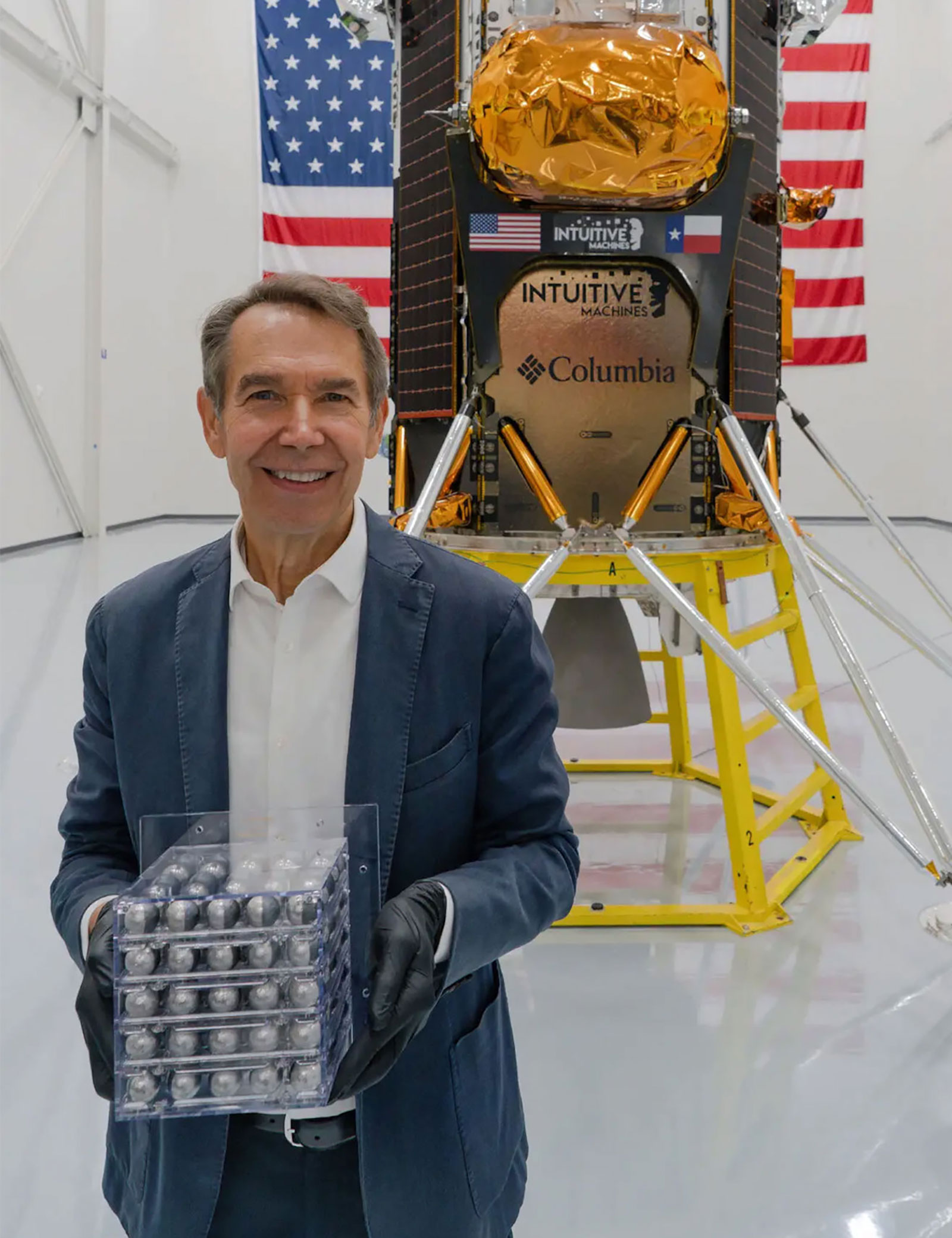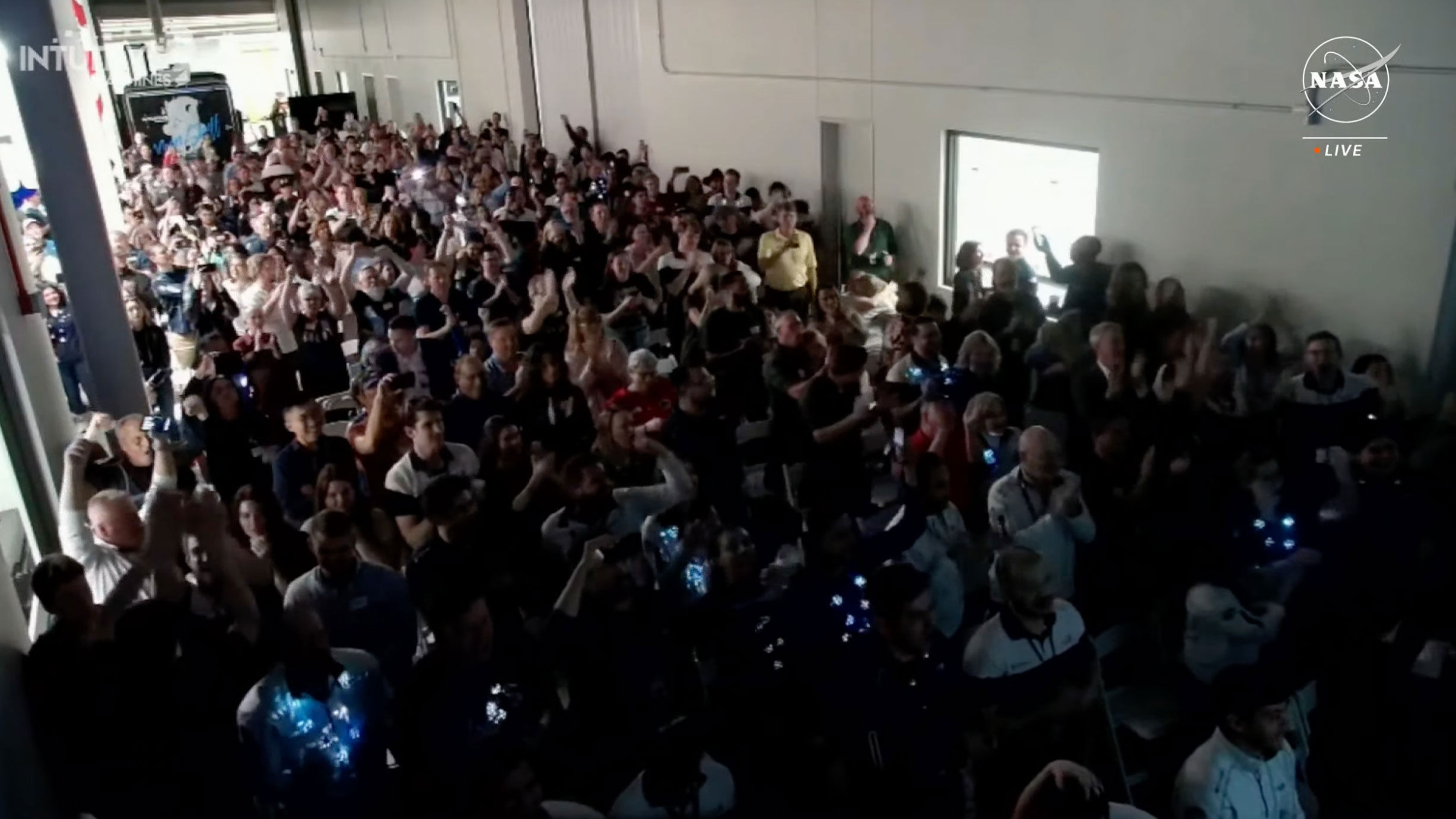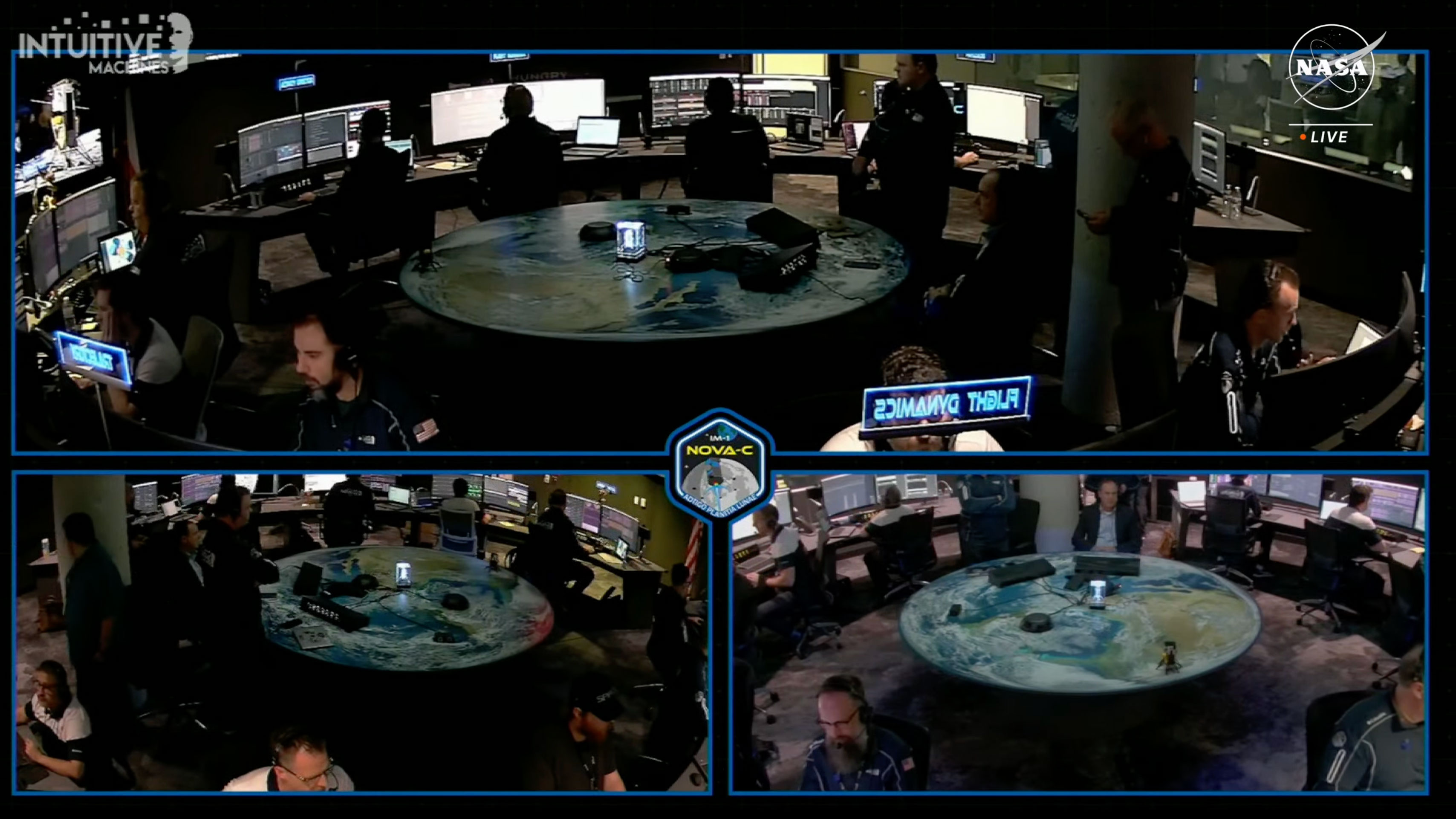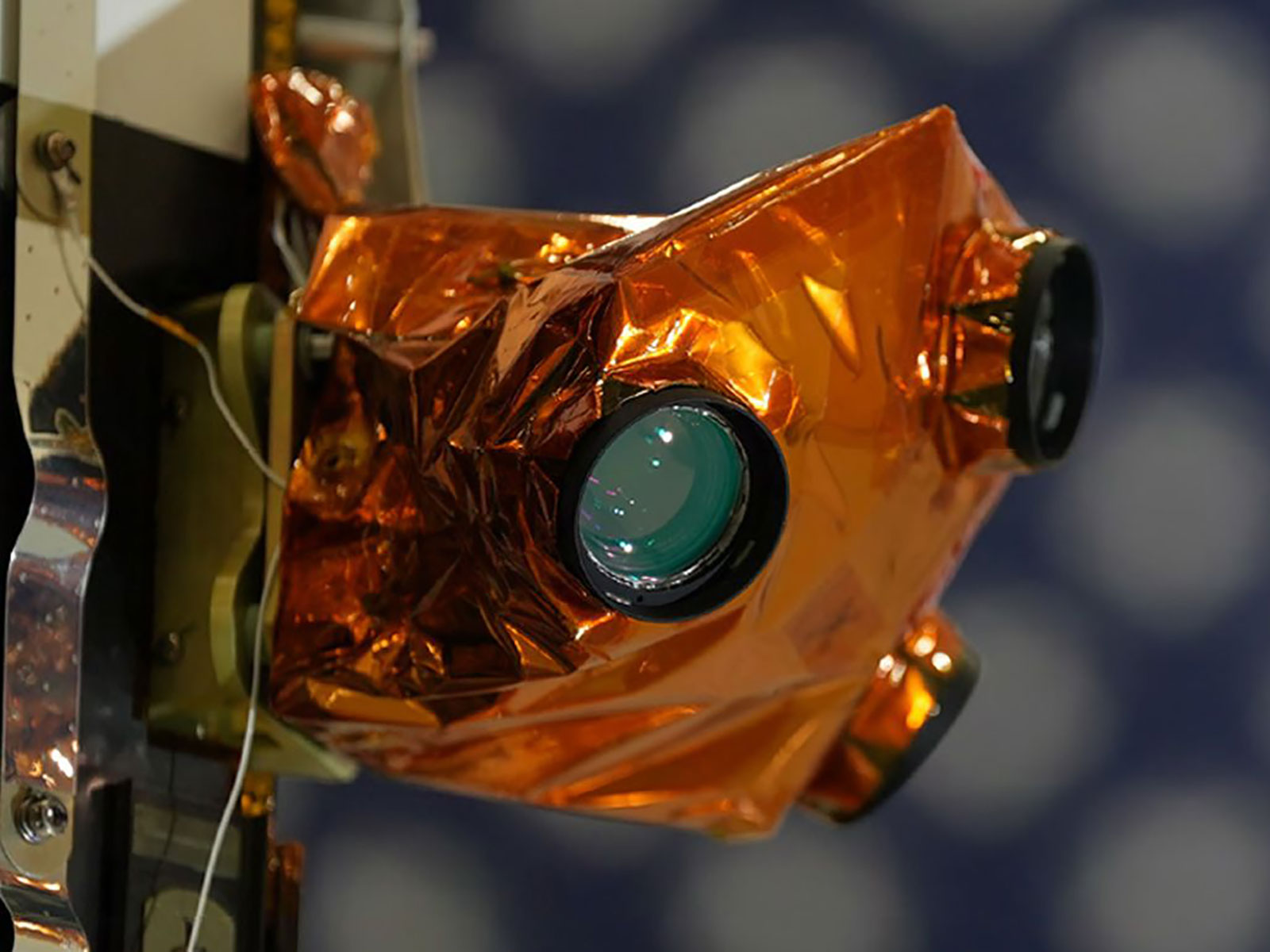
Odysseus has now officially made history with its successful lunar touchdown — and none of it could have happened without some fast work from engineers on the ground and a breath-catching save from a NASA payload.
Before descent, Intuitive Machines, which developed the Odysseus lunar lander, revealed crucial pieces of the vehicle's navigation equipment were not working.
Fortunately, NASA — which considers itself one of many customers on this mission — had an experimental instrument already on board Odysseus that could be swapped in to make up for the malfunctioning equipment.
Engineers were able to bypass Odysseus' broken pieces and land using two lasers that are part of NASA's Navigation Doppler Lidar, or NDL, payload.
Here's how the NDL is described in IM-1's press kit:
The NDL is a LIDAR-based (Light Detection and Ranging) sensor composed of an optical head with three small telescopes and a box with electronics and photonics. NDL uses lasers to provide extremely precise velocity and range (distance to the ground) sensing during the descent and landing of the lander. This instrument operates on the same principles of radar, similar to a police radar detector, but uses pulses of light from a laser instead of radio waves and with very high accuracy. This will enhance the capabilities of space vehicles to execute precision navigation and controlled soft landings.
